Merthyr Tydfil Electric Tramways
History
Merthyr Tydfil Electric Tramways were owned and operated by the Merthyr Tydfil Electric Traction and Lighting Company, a subsidiary of the much larger British Electric Traction Company Ltd (BETCo), a concern which over the course of its existence, either owned, part-owned or leased almost 50 tramway systems across the British Isles.
During the late 1890s, the BETCo was aggressively purchasing horse and steam-operated tramways across the British Isles, with the intention of converting them to electric traction, as well as promoting schemes in towns which had no existing tramway. Merthyr Tydfil fell into the last category, and must certainly have been viewed by the BETCo as an attractive proposition given that its population was well over 60,000. The MTET&LCo applied for powers to build a tramway in May 1898 — under a Light Railway Order — approval being granted almost exactly one year later on the 16th May 1899.
The overhead electric tramway, which was built to a gauge of 3ft 6ins due to the narrowness of many of the streets it needed to negotiate, opened on the 6th April 1901. The system as initially built was just 3.0 miles long, comprising a main line running southeastwards from Cefn Bridge to Portmorlais Circus, where it turned northeastwards, climbing extremely steeply to a terminus at the Bush Inn next to Dowlais Ironworks; in addition, a short branch ran southwards from Portmorlais Circus to the GWR Station, terminating in Graham St. A short extension northwestwards from Cefn Bridge to Cefn was built in 1914, taking the system to its final extent of 3.4 miles. The system was always isolated, its nearest neighbour being Aberdare, some 5 miles distant.
Financial details of the tramway are unknown, though it must inevitably have depended very heavily the ironworks' traffic, moving large numbers of workers at the start and end of shifts; as long as the ironworks did well, then presumably, so did the tramway. An indication of the loadings, and therefore the profitability, can be inferred from the fact that ten of the company's 13 single-deck trams had been substantially rebuilt to double-deck form between 1909 and 1915.
The tramway doubtless suffered from the rigours of the Great War — staff shortages, minimal maintenance and severe restrictions on purchasing new tracks or tramcars — but was kept running, and presumably fairly well-maintained in the 1920s. Merthyr Tydfil Corporation entered the transport world on the 18th October 1924, but was prevented from running its new buses along the tram routes by provisions within the Merthyr Tydfil Corporation Act of 1920, presumably resulting from objections/lobbying by the MTET&LCo.
The trams ran on into the 1930s, second-hand trams being procured from other BETCo systems, the company seemingly happy to carry on providing a service, despite a fairly dramatic drop in passenger numbers due to mass unemployment (it was in excess of 40% in 1936). The corporation however had other ideas, and wanted the trams gone from its narrow streets, so entered into negotiations with the company to see how much they wanted to close the system. A figure of £13,900 was eventually agreed, and the last tram ran on the 23rd August 1939.
Uniforms
The photos below show Merthyr Tydfil Electric Tramways staff wearing the familiar and largely regulation BETCo uniform. Although jackets appeared to vary somewhat between BETCo systems, as well as across the decades, the cap badges, collar designations and buttons invariably followed a standard pattern.
The first uniforms (from 1901 onwards) took the form of double-breasted jackets with four pairs of buttons (bearing the standard BETCo 'Magnet and Wheel' device — see link), as well as a fifth pair between the lapels and the collars; the latter carried embroidered system initials — 'M E T' — on both sides. Caps were in a military style with a tensioned crown (top) and glossy peak; they carried a standard brass BETCo 'Magnet and Wheel' cap badge, which was worn above an employee number (in individual brass numerals).
At some point, and certainly by the end of the Great War, the uniform jackets were changed to a single-breasted design with five buttons and upright collars; the latter carried 'M E T' system initials on the bearer's right-hand side, and an employee number on the left. It is likely, though by no means certain, that the employee number was removed from the caps at the same time.
A final change was made some time in the 1920s or 1930s, back to a double-breasted style with five pairs of buttons, but with a much more modern cut than previously; the collars no longer carried any insignia. By this time, the caps definitely carried the 'Magnet & Wheel' badge only.
Tramcar staff were also issued with double-breasted greatcoats with five pairs of buttons and high fold-over collars; no insignia, other than the buttons, appears to have adorned these garments.
Inspectors were issued with fairly standard tramway inspector uniforms, which comprised single-breasted jackets with four slit pockets, hidden buttons (or more likely a hook and eye affair) and upright collars; the jackets and pockets were edged in a finer material than the main body of the jacket, with the collars bearing the grade — Inspector — in embroidered script lettering. Headgear comprised the same military-style cap issued to tramcar crews, but with the grade — Inspector — embroidered on a hat band (in script lettering), along with the standard BETCo brass cap badge (worn above).
In common with the vast majority of UK tramway systems, women were employed during the Great War to replace male staff lost to the armed services. These ladies were issued with tailored, single-breasted jackets with five buttons, lapels, two hip pockets and a waist belt (with button fastening), along with a medium-length matching skirt; the lapels were devoid of insignia. Headgear took the form of a dark-coloured, wide-brimmed bonnet with a hat band, to which the standard BETCo cap badge was affixed.
Further reading
For more information on Merthyr's tramways, see: 'The Tramways of South Wales' by W H Bett and J C Gillham (edited by J Price); Light Rail Transit Association (1993).
Images
Motormen and conductors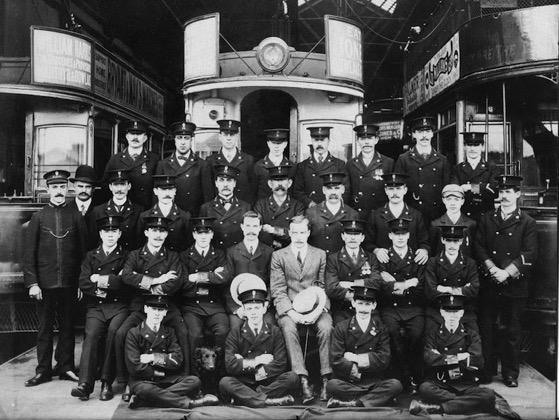
A fine shot taken in 1903 at Trevithick St depot, some two years after opening. The individual standing 5th from the right on the back row is believed to be Walter Davies, who stayed with the company right through to its final day (see below). Photo courtesy of the Tramways and Light Railway Society, with thanks to David Voice.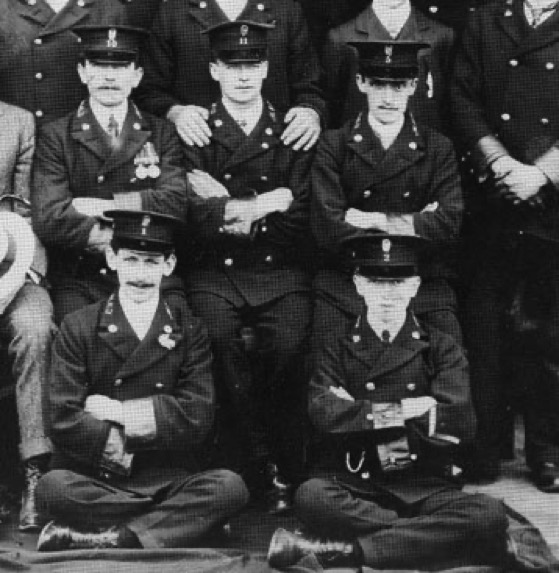
A blow-up of the above photo showing five of the staff. The military-style caps bear the standard British Electric Traction Company 'Magnet & Wheel' cap badge, worn above an employee number. The collars bear the system initials: probably 'MTET' or 'MET'. The chevron on the sleeve of the individual at the bottom right very probably denotes good conduct.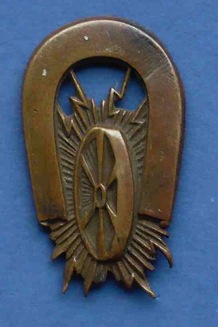
Standard British Electric Traction Company ‘Magnet & Wheel’ cap badge — brass. Author's Collection.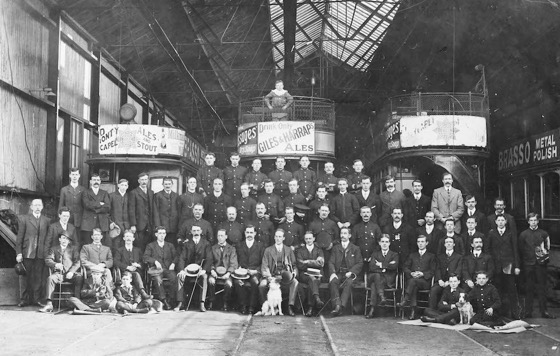
Presumably the entire staff assembled at Trevithick St depot in 1919. Photo courtesy of the Tramways and Light Railway Society, with thanks to David Voice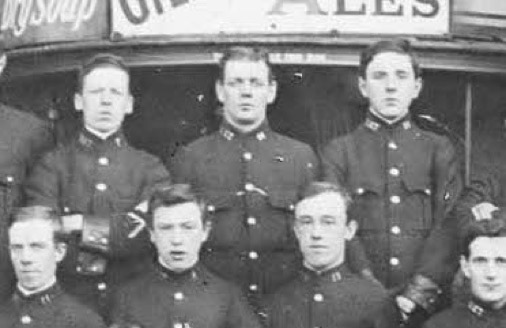
A blow-up of the above photo showing seven of the staff, all looking very young, presumably a consequence of the Great War. The uniforms had by this time been changed to a single-breasted style with upright collars; although difficult to make out, the collars bear 'M E T' system initials on the bearer's right-hand side, and an employee number on the left.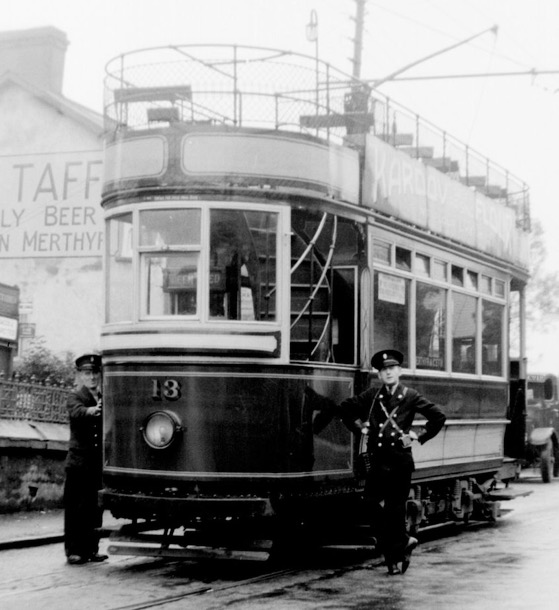
Tramcar No 13 and crew stand outside the Morning Sun at the Cefn Coed terminus — photo undated, but almost certainly taken in the mid-to-late 1930s. Photo by M J O'Connor, courtesy of the National Tramway Museum. 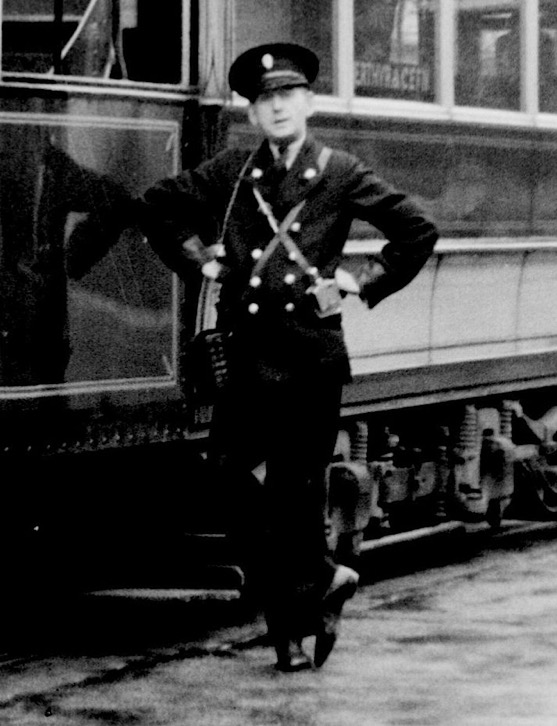
A blow-up of the above photo showing the conductor.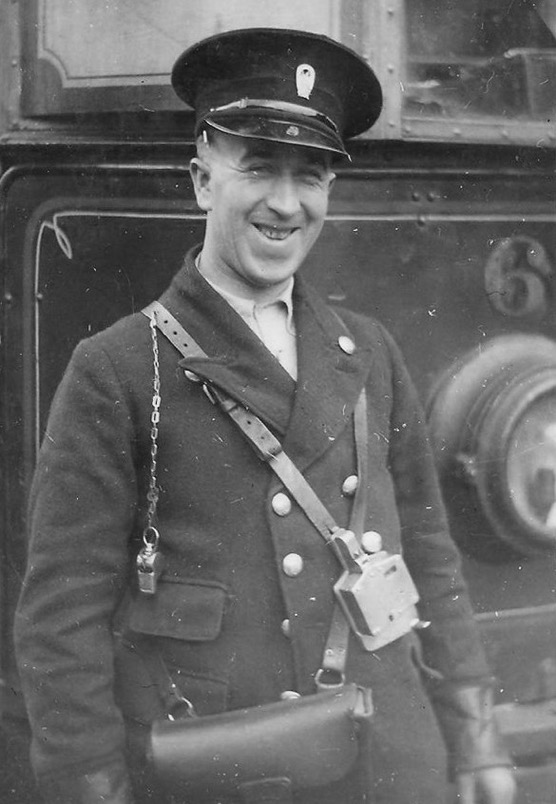
MTET conductor (believed to be Walter Davies) with Tramcar No 6 — photo undated, but very probably taken in the late 1930s. Photo courtesy of the Tramways and Light Railway Society, with thanks to David Voice.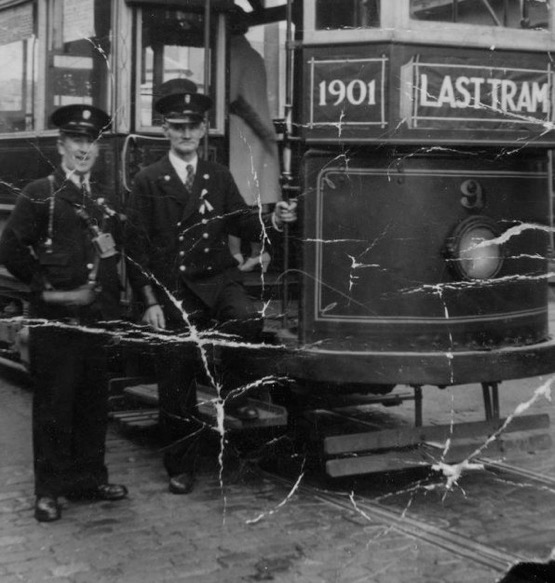
The crew of Merthyr's last tram (No 9) — pose for the cameraman with their charge outside the Bush Hotel — probably taken on 23rd August 1939. The conductor is once again Walter Davies (see above), whilst the motorman is John Buckley. Photo courtesy of the Tramways and Light Railway Society, with thanks to David Voice.
Senior staff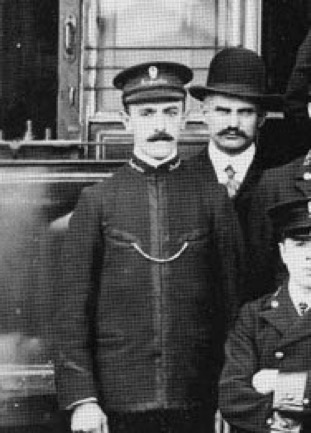
A close up of an inspector, taken from the 1903 depot shot above.
Female staff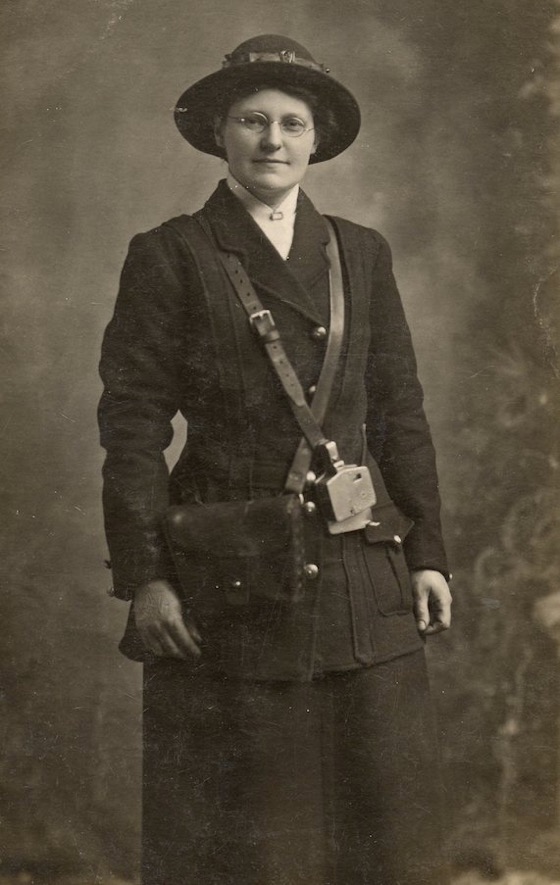
A fine studio portrait of a very smart looking Merthyr Tydfil Electric Tramways Great War conductress. The subject was presumably called 'Aggie' as the back of the post card reads "For Dear Will, with love from Aggie, May 18th 1916". The card was evidently hand delivered to 15 St Tydfils Avenue, Merthyr Tydfil, Glamorgan, S Wales. Photograph by Jesse Williams, Royal Studios, Merthyr. Author's Collection.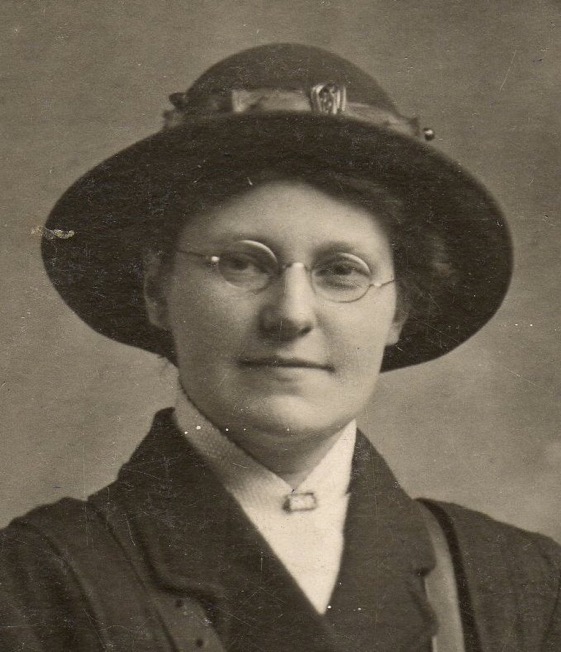
A blow-up of the above photo, clearly showing the standard British Electric Traction Company 'Magnet & Wheel' cap badge.